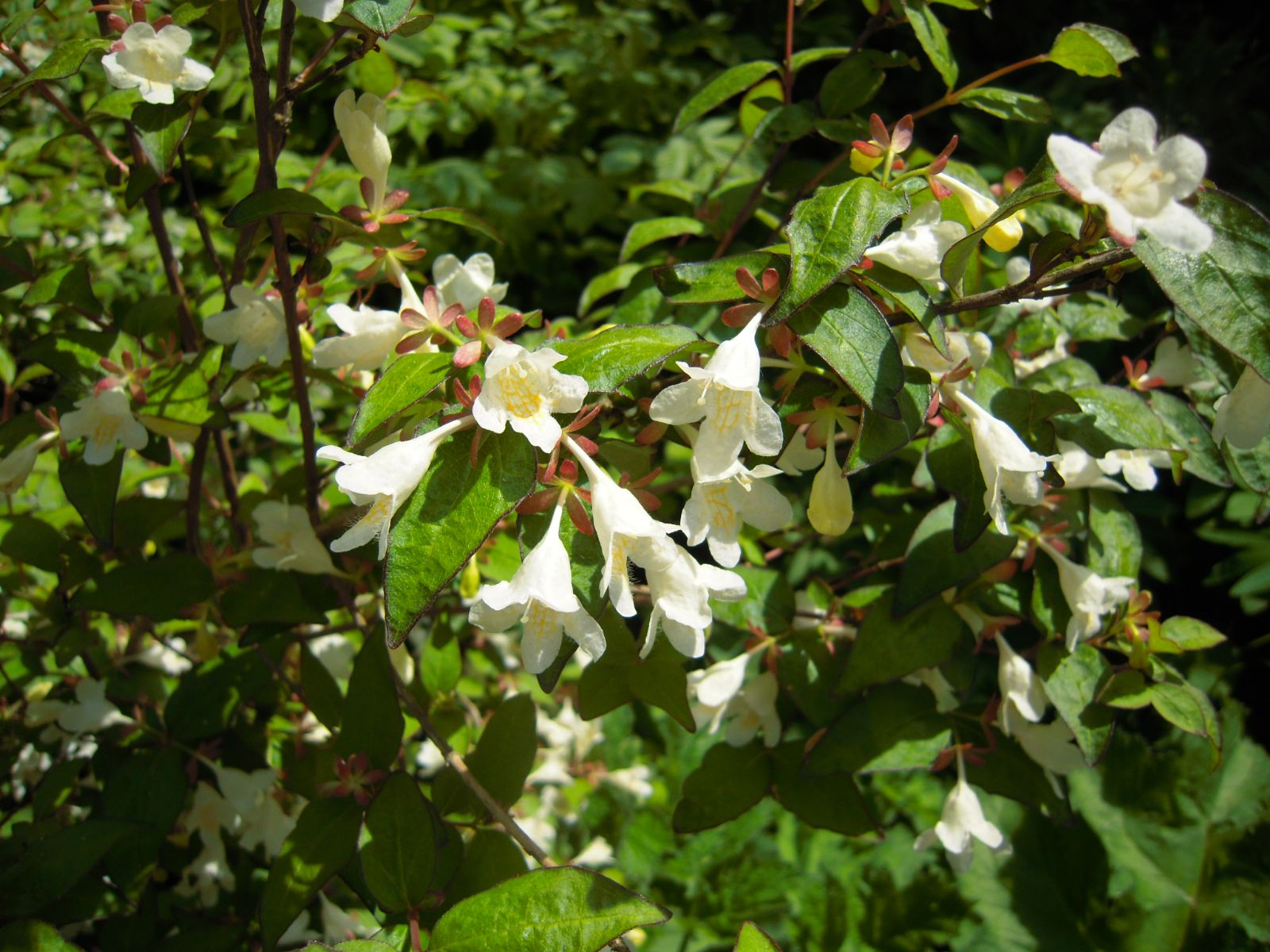Abelia uniflora
Sponsor
Kindly sponsored by
The Normanby Charitable Trust
Credits
Owen Johnson (2021)
Recommended citation
Johnson, O. (2021), 'Abelia uniflora' from the website Trees and Shrubs Online (treesandshrubsonline.
Genus
Synonyms
- Linnaea uniflora (R. Br. ex Wall.) A. Braun & Vatke
Shrub to 1.5 m. Shoots glabrescent to densely hairy with erect or hooked hairs. Leaves ovate, 0.8–3.8 × 0.4–2 cm, base rounded to cuneate, tip acute to acuminate, rather matt, sparsely hairy but usually densely so under the base of the midrib; margin entire or with distant glandular teeth; petiole to 2 mm long. Flowers June-September, solitary along new shoots; peduncles densely hairy, 2–3 mm long; calyx lobes 2, often notched and deeply lobed and appearing as 3 or 4 sepals, 8–10 × 4–5 mm, persistent and reddish; corolla 1.4–2.4 cm long, pink-purple, the throat bearded and with yellow markings; corolla-lobes subequal, ovate, slightly recurved, tube expanding abruptly to the mouth and bulging ventrally at the base. Stamens with filaments hairy at the base; style glabrous, sometimes longer than the corolla-tube; fruit ripening October-November, 1-seeded, to 8 mm long. (Landrein & Farjon 2020).
Distribution China Anhui, Fujian, Jiangxi, Zhejiang.
Habitat Mountain forests
USDA Hardiness Zone 6
RHS Hardiness Rating H5
Conservation status Least concern (LC)
Abelia uniflora is a relictual species with a local distribution in the north-east of China. Consequently, it was the first species to be introduced to the UK, by Robert Fortune in 1845, and proved hardy here (Bean 1976). In the 1880s it was hybridised in Italy with A. chinensis, and the resultant hybrids (A. × grandiflora), being even hardier and with smaller flowers borne more profusely into winter, have entirely replaced their A. uniflora parent as garden plants. A. uniflora itself has long been assumed extinct in cultivation in the west, though it is difficult to differentiate visually from A. macrotera and A. schumannii, whose native ranges lie further west in China, and which are currently grown in Europe and North America in varing forms including as hybrids. In China, A. uniflora is still cultivated at the Wuhan Botanical Garden (Landrein et al. 2017).

